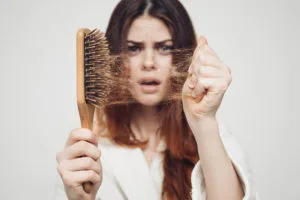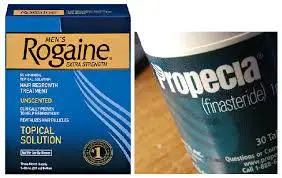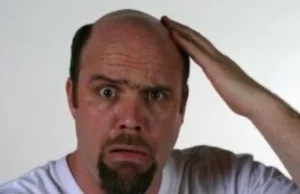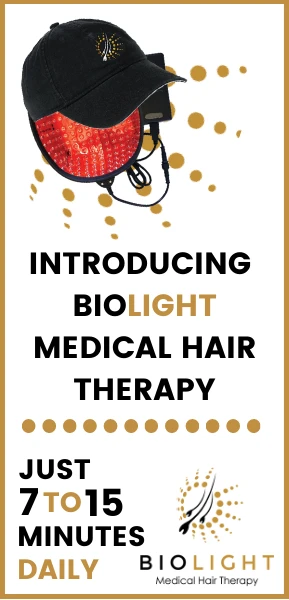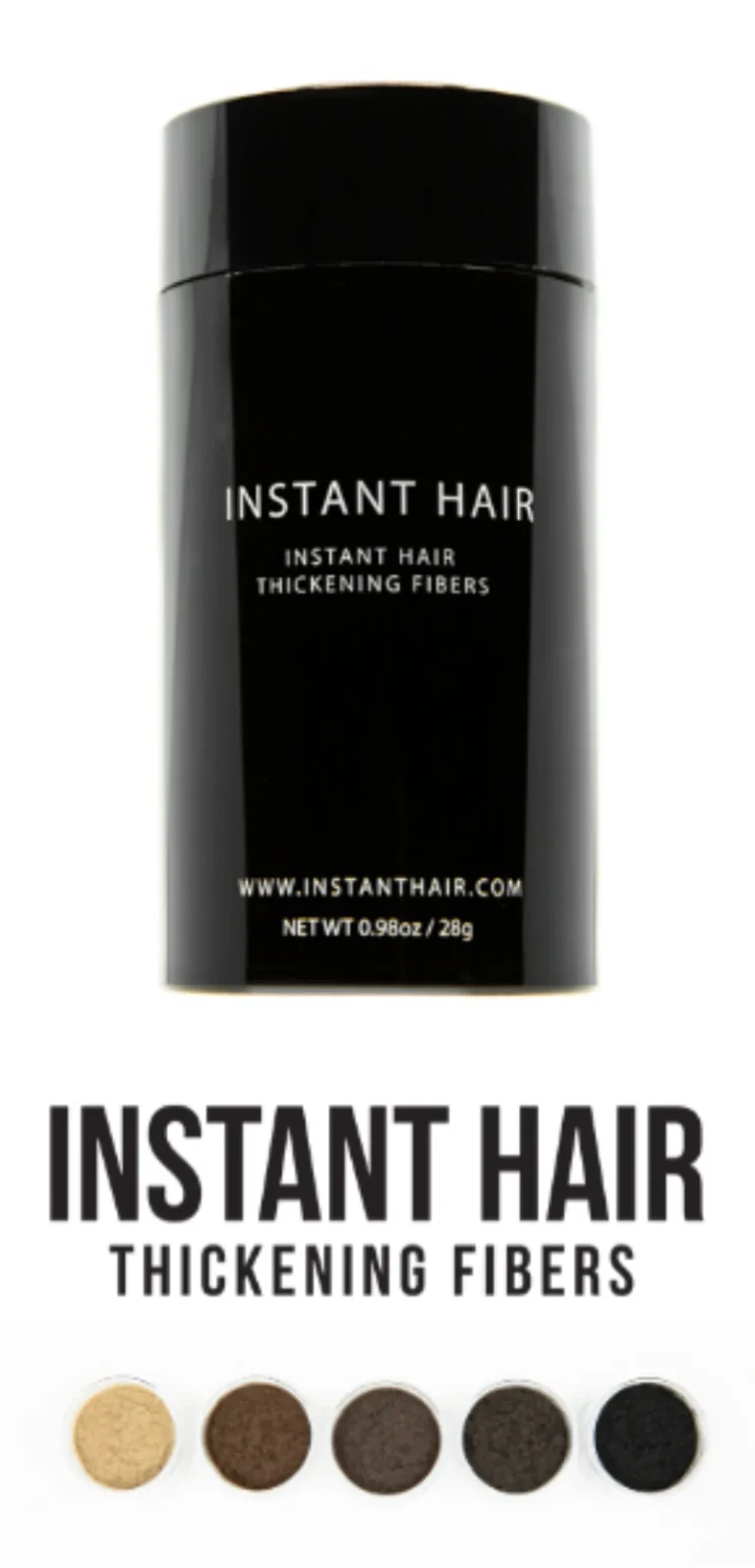Hair Loss Surgeons Toronto: FAQ’s on What Causes Hair Loss & Hair Thinning in Men
We know there is a lot of information to take in. We’ve collected a few of the most frequently asked questions about hair loss and answer them here.

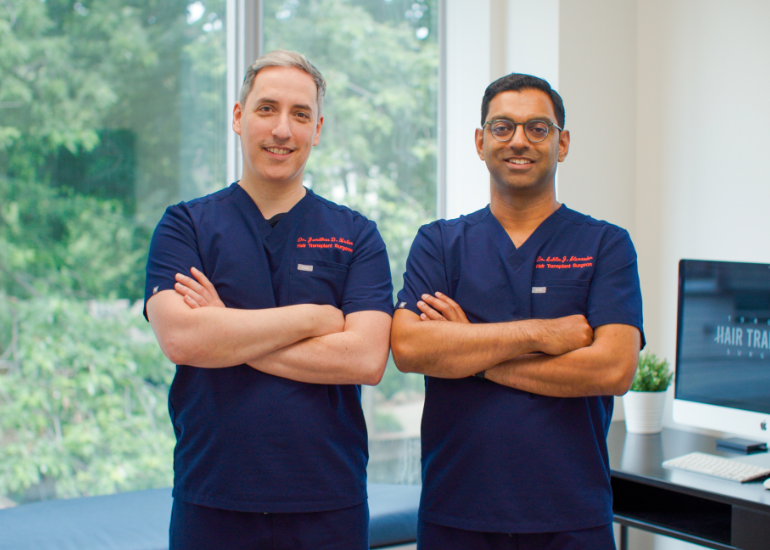
Toronto Hair Transplant Surgeons are internationally known for our pioneering work in hair transplantation.
Introduction to Hair Loss
Hair loss, or alopecia, is a widespread concern that affects millions of people across the globe. Whether it’s gradual thinning or sudden hair fall, the impact can be both physical and emotional, often leading to a loss of self-esteem and confidence. Hair loss can result from several factors, including genetics, hormonal imbalances, nutritional deficiencies, and underlying medical conditions. Fortunately, advances in hair loss treatments have made it possible to address these concerns effectively. Today, options such as hair restoration, hair transplants, and non-invasive treatments like platelet rich plasma (PRP) therapy offer hope for those seeking to restore their hair and regain their confidence. In this article, we’ll explore the different types of hair loss, what causes them, and the innovative treatments available to help you achieve healthier hair regrowth.
Types of Hair Loss
Understanding the type of hair loss you’re experiencing is the first step toward finding the right solution. The most common form is androgenetic alopecia, also known as male or female pattern baldness. This condition is driven by a combination of genetics and hormonal imbalances, leading to a predictable hair loss pattern that can be managed with evidence-based hair loss treatments like minoxidil and finasteride. Another type, alopecia areata, is an autoimmune disorder that causes patchy bald spots on the scalp or other areas of the body. Treatments for alopecia areata often include corticosteroids and immunosuppressive medications to help restore hair growth.
Telogen effluvium is characterized by excessive shedding and is often triggered by emotional stress, nutritional deficiencies, or sudden changes in health. This type of hair loss is usually temporary, and addressing the underlying cause can help reverse the process. Traction alopecia, on the other hand, results from constant pulling or tension on the hair, often due to tight hairstyles. Early intervention and changing hair care habits are key to preventing further hair loss in these cases. Each type of hair loss requires a tailored approach, and understanding the underlying cause is essential for effective treatment.
Have Questions
Often our patients have some of the same questions about hair loss and other hair concerns – ranging from pregnancy to stress and even exercise, so we thought it would be best to collect them all in one place.
How long does it take to see results from hair loss treatments?
The timeline for seeing results varies depending on the treatment method and individual response. In general, noticeable improvements can be observed within a few months of starting the treatment.
Are the hair loss treatments painful?
Most hair loss treatments are minimally invasive and do not cause significant pain. Some individuals may experience mild discomfort during procedures, but this can be managed with local anesthesia or numbing agents. Most patients report minimal discomfort and only mild swelling, both of which typically resolve quickly.
Can hair loss be prevented?
While some types of hair loss are unavoidable, certain preventative measures can be taken to minimize the risk. Maintaining a healthy lifestyle, managing stress levels, and avoiding harsh hair treatments can contribute to overall hair health.
Are the results of hair transplant surgery permanent?
Hair transplant surgery provides a permanent solution to hair loss. The transplanted hair follicles are typically resistant to the effects of DHT, the hormone responsible for male pattern baldness, ensuring long-term results. Hair transplants are designed to blend seamlessly with your existing hair, providing natural results that are virtually indistinguishable from your original hair.
How can I determine the best hair loss treatment Toronto for my specific condition?
Our hair loss treatment clinic employs skilled professionals who conduct thorough assessments to understand your unique hair loss concerns. Based on this evaluation, we recommend personalized treatment plans designed to target and reverse hair loss effectively.
Are your hair regrowth clinic treatments suitable for female hair loss?
Absolutely. Our hair regrowth clinic specializes in treatments that cater to both male and female hair loss concerns. Our treatments cater specifically to the unique needs of women, including those experiencing female pattern hair loss and different hair types. We have tailored approaches specifically designed to address the distinctive needs of female clients experiencing hair loss.
Why Does Hair Loss Happen After Pregnancy?
There’s a very good chance that you know a woman who ended up shedding more hair than usual in the first few months after giving birth. Hopefully, both you and her know this is completely normal.
The best news is that your hair should go back to normal within the first year of giving birth.
It all has to do with science!
Normally, about 85 to 95 percent of the hair on your head is growing and the other 5 to 15 percent is in whats called the resting stage. After the resting period this hair begins to fall out. It usually happens while your handling your locks, like while you’re brushing or shampooing, and those hairs are replaced with new growth.
An average woman sheds about 100 hairs a day.
During pregnancy, increased levels of estrogen prolong the growing stage (this is where the science comes in), and there are fewer hairs in the resting stage, which means fewer hairs are falling out each day. You have GORGEOUS hair during your pregnancy for this reason!
But you do pay for it later (kinda).
After you give birth, your estrogen levels take a nosedive and your hair follicles rapidly enter the resting stage. Almost immediately you’ll begin to notice your hair falling out at what you may consider an alarming rate.
But don’t stress it – the vast majority of women have a large amount of hair loss after their pregnancy. Your body is just balancing out and this unusual shedding will slow down and eventually stop within six to 12 months after you give birth.
It’s worth noting that not all women notice dramatic changes in their hair during pregnancy or the postpartum period. This issue usually tends to be a little more accelerated for women with long hair.
If you’re concerned about your hair loss postpartum, be sure to see your doctor.
Our Results
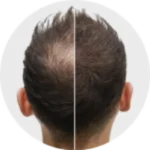
Toronto Hair Transplant Surgeons are internationally known for our pioneering hair transplantation work.
Our huge archive is here to help you see what we can do for you. Use the link below to view some sample cases.
Can Excessive Exercise Cause Hair Loss?
Our bodies were meant to move — they actually crave exercise. Regular exercise is necessary for physical fitness and good health. It reduces the risk of heart disease, cancer, high blood pressure, diabetes and other diseases. It can improve your appearance and delay the aging process. But can too much exercise cause hair loss?
Exercise prevents disease, improves stamina, and strengthens and improves your muscles. It also allows you to enhance your flexibility and controls your weight, not to mention, it improves and helps you to maintain a good quality of life.
If excessive exercise includes the use of things like tight helmets/headgear or constant friction on the scalp – than perhaps there could be a correlation. Additionally, when using the term excessive – if hormones and nutritional deficits occur as a result of excessive stress on the body from training – there is a possibility it could impact hair loss. Vitamin deficiency and underlying medical conditions can also play a significant role in hair loss, so it is important to consider these factors when evaluating the cause. However, the use of anabolic steroids or other stimulants and chemicals used to enhance performance definitely have the possibility of creating negative side effects which might include hair loss or even unwanted hair growth in areas. But the exercise itself is unlikely to damage your hair follicles on its own.
Do Hair Loss Treatments Actually Work?
When it comes to hair loss treatment, the number one question that new hair loss sufferers have is – do they actually work?
The short answer to that question is yes.
The more accurate answer is, for some people and to varying degrees.
The two main hair loss treatments currently available are finasteride and minoxidil, although you might know them better by their respective brand names – Propecia and Rogaine. Although they work in different ways, both have been clinically proven to help treat hair loss for men.
Let’s look at how each drug works and what the science behind them is.
Finasteride
Finasteride was first made commercially available in the late 90s and is seen by some men as a true miracle cure. The way finasteride works is that it inhibits the main hormone responsible for hair loss in men – dihydrotestosterone (DHT). By inhibiting DHT at a systemic level, it halts and in some cases, reverses hair loss.
Whilst finasteride is certainly effective for the majority of men (83% to be exact), it is most effective when used as a preventative treatment. That is to say – men who have complete hair loss cannot realistically expect to grow back a full head of hair. Those suffering from mild to moderate thinning at the crown can typically expect their hair loss to be slowed down and in some cases, regrowth.
Minoxidil
Minoxidil is significantly different to finasteride in that it’s marketed more as a regrowth treatment rather than a preventative measure.
Minoxidil works as a vasodilator, which essentially means it increases blood flow to the hair follicles and therefore encourages hair growth. Whilst minoxidil has been proven to be effective, the results do vary quite significantly. Because of this, many men will take both Minoxidil and Propecia to maximize the results they get from each treatment.
In addition to these medications, we offer evidence based treatments for hair loss. Our clinic provides evidence-based treatments such as PRP hair restoration and PRP treatment, which are supported by clinical research. These treatments for hair loss have shown promising results in increasing hair density and improving patient satisfaction.
What about side effects?
Both minoxidil and finasteride can produce negative side effects for those taking them.
Side effects for minoxidil can include chest pain, irregular heartbeat, bloating and flushing.
Finasteride effects can include weak libido, loss of erections, fatigue, anxiety and depression. The seriousness and duration of finasteride side effects is a topic of fierce debate in the hair-loss community – some men believe that the drug is completely harmless whilst others believe it’s dangerous and causes permanent irreversible sexual side effects.
As is usual with these types of debates – Our experience at the Toronto Hair Transplant Surgeons is that these medications are well tolerated by most patients and we discuss the pros and cons of any medications on an individual basis with our patients.
THTS Gallery


Familiarize yourself with our layout before you come in.
Visit the gallery to take a peek at our Oakville based clinic layout and surgical rooms.
Will there ever be a permanent cure for hair loss?
A question that a lot of people who are suffering from hair loss would like the answer to is – will there ever be a permanent cure for hair loss? Given the advancements in technology and medicine over the last decade, it’s an almost certainty that there will be a permanent cure for hair loss. Given that, the more interesting questions are – when will we have it and what will it look like?
When will we have it?
The hair loss industry is worth billions each year, when you take hair transplants and hair loss treatments into account. This being the case, a permanent cure for hair loss would be worth unimaginable amounts of money. Whenever there’s a lot of money to be made, you can sure that someone’s trying to figure out how to make it. This is a big part of the reason why research into hair loss has increased dramatically over the last 2 decades.
At one time, it was simply accepted that some men lose their hair and there’s nothing that can be done about it. Nowadays, as scientists have learned more about the biological reasons behind hair loss, the premise of a permanent cure looks much more likely. Whilst it’s impossible to predict exactly when a permanent and completely effective cure for hair loss will be on the market, it certainly doesn’t seem like a foreign notion when you consider the effective solutions that are available right now.
What will it look like?
It’s easy to assume that a permanent hair loss cure would come in the form of a pill, much like Propecia is now. However, one of the most promising avenues of hair loss research is hair cloning. Hair cloning is being researched in many different labs around the world. Hair cloning research has heavy investment into its possibilities as the most effective treatment for permanent hair loss treatment.
Can stress really cause hair loss?
There are a lot of myths that persist around the subject of hair loss. A big part of the reason for this is that people generally don’t think about hair loss until they have to deal with it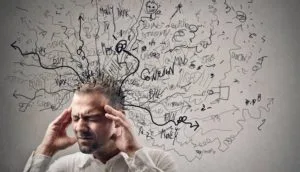
Something that a lot of people believe is that stress is major cause of hair loss – but is this really true? Well, the answer is – sometimes, but in most cases – no. When talking about classic male pattern balding, stress is usually not a factor. However, there is a particular type of hair loss known as telogen effluvium that can be triggered by very stressful events.
It’s worth pointing out that this type of hair loss is relatively rare, especially when compared to male pattern balding so in a general sense, no – stress is not what causes hair loss.
The main culprit of male pattern balding is the hormone dihydrotestosterone (DHT). DHT is produced naturally in the body, but for a good percentage of men, their DHT levels rise as they age and this in turn causes their hair to thin out. This is because hair follicles are very sensitive to DHT and its presence causes them to shrink and eventually die.
There are other factors that can contribute to the speed at which hair loss occurs, such as diet and lifestyle factors, but DHT is by far the biggest culprit in male balding.
Available treatments
Know you know what causes hair loss you’re probably curious as to whether anything can be done about it. The good news is that there are now treatments available that are proven to be effective in treating hair loss. The bad news is they don’t work for everybody and they do come with some potential side effects.
Below are the two FDA-approved treatments available for hair loss.
- Finasteride – Better known by its brand name – Propecia, Finasteride is a DHT inhibitor that works by lowering the amount of DHT that’s synthesized in your body and therefore slowing, and in some cases reversing hair loss. Potential side effects include weak erections, watery semen and brain fog. These side effects only affect a small minority of men and usually subside once treatment is stopped.
- Minoxidil – Also known as Rogaine, is a vasodilator, which essentially means it widens blood vessels. Although it’s not 100% clear exactly why minoxidil works for hair loss (it was originally developed as medication to treat high blood pressure), a lot of men have it as a key part of their regimen. Side effects are less common with minoxidil but they can include irregular heartbeat, headaches and puffiness in the face.
Is your state of hair related to what you eat?
Does your hair health depend on what you eat?
A well balanced diet that is adequate in protein is essential for cell functioning and cell repair activities in the body. Protein is a building block of your hair, for your hair is made of keratin which is basically a protein. Evidently, without the supply or availability of adequate levels of protein, your body will not be able to replace fallen hair that is a natural occurrence everyday. Lack of protein in your diet will make your hair to be dry, lifeless and brittle.
Seafood
Fish is rich in essential fatty acids (specifically,
Salmon is great for your hair because it not only contains omega-3 fatty acids, but is also abundantly rich in protein and Vitamin D. Salmon is a great source of natural oils that keep your hair well nourished and healthy.
Eggs
Eggs make a perfect protein rich breakfast. Eggs are also a wonderful source of minerals such as iron, zinc and sulfur. Iron plays a role in promoting the health of hair follicles because it helps in delivering oxygen to the follicles.
Vegetarian and looking out for protein source? Think lentils!
Don’t worry if you are vegan or vegetarian. You still can get your protein from lentils! They also contain nutrients such as iron, zinc etc.,
Fresh greens and leafy vegetables
These are a great source of several vitamins that promote the health of hair follicles and keep the scalp healthy.
Poultry
Poultry foods are an abundant source of hair building proteins and nutrients.
Hair Thinning Solutions
If you’re noticing gradual thinning or a reduction in hair density, there are several effective solutions to consider. Hair restoration, commonly known as hair transplantation, is a surgical procedure that relocates healthy hair follicles to areas affected by thinning or balding. This technique is especially effective for restoring a youthful hairline and achieving a natural appearance, particularly in cases of androgenetic alopecia or significant frontal hairline loss.
For those seeking non-invasive treatments, PRP therapy is an innovative option that uses your body’s own platelet rich plasma to stimulate hair follicles and encourage new hair growth. This treatment is suitable for a range of conditions, including androgenetic alopecia, alopecia areata, and telogen effluvium, and can help improve hair density and promote healthier hair regrowth. By combining specialized techniques and ongoing support, these treatments offer an effective solution for individuals looking to address hair thinning and restore their confidence.
Facial Hair Restoration
Facial hair restoration has become increasingly popular for individuals looking to enhance or restore their beard, mustache, or eyebrows. Hair transplants for facial hair involve transferring healthy hair follicles from one part of the body to the desired facial area, resulting in a fuller, more natural appearance. This procedure is ideal for those with sparse or patchy facial hair due to genetics, scarring, or medical conditions such as alopecia areata.
In addition to surgical options, PRP therapy can be used to stimulate facial hair growth by delivering growth factors directly to the hair follicles in the beard or eyebrow region. For individuals experiencing facial hair loss as a result of autoimmune conditions, treatments may also include corticosteroids or other immunosuppressive medications to address the underlying cause. With a range of personalized treatments available, facial hair restoration can help you achieve the look you desire and boost your self-esteem.
Conclusion
Hair loss can be a challenging experience, but with today’s advanced hair loss treatments, there are more options than ever to restore your hair and your confidence. Whether you’re considering hair restoration, hair transplants, or non-invasive treatments like PRP therapy, working with a hair loss specialist is the best way to develop a personalized treatment plan tailored to your unique needs. By taking proactive steps and maintaining a healthy lifestyle, you can support ongoing hair growth and enjoy a thicker, healthier appearance. Remember, effective treatment is possible, and with the right support, you can regain your self-esteem and achieve natural, lasting results.



